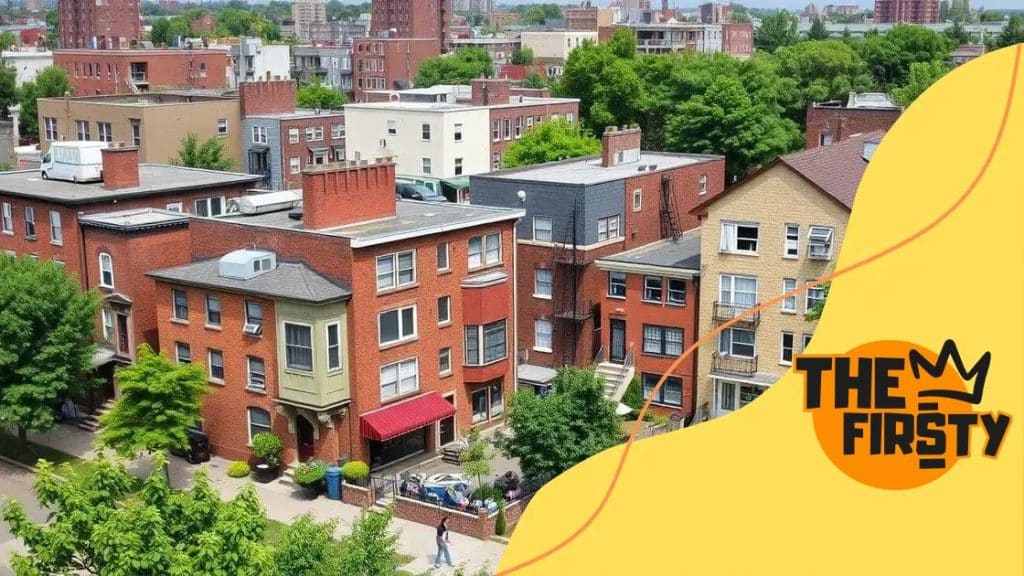Federal subsidies for low-income housing: a lifeline

Anúncios
Federal subsidies for low-income housing provide essential financial support to affordable housing initiatives, helping families access safe and stable living conditions while promoting community revitalization and economic growth.
Federal subsidies for low-income housing in urban areas are essential for providing affordable living options. Have you ever wondered how these funds transform communities? Let’s dive into how these subsidies work and who benefits.
Anúncios
Understanding federal subsidies for housing
Understanding federal subsidies for housing is crucial for many families seeking affordable living options. These subsidies act as financial assistance, helping to reduce housing costs for low-income households. By comprehending how these programs function, you can better navigate the opportunities they present.
What Are Federal Housing Subsidies?
Federal housing subsidies are programs aimed at making housing more affordable. The government allocates funds to assist individuals and families in need. These subsidies can take various forms, such as direct payments to landlords or reduced rent through specific programs.
Types of Housing Subsidies
There are several types of federal housing subsidies that play a significant role in urban areas:
Anúncios
- Section 8 Vouchers: These vouchers allow low-income families to rent units in the private market.
- Public Housing: The government manages housing complexes specifically for low-income residents.
- HOME Investment Partnerships Program: This program provides funds to create affordable housing.
- Low-Income Housing Tax Credit (LIHTC): This incentivizes private developers to build affordable housing.
Understanding these types allows potential beneficiaries to assess which option fits their needs best. For instance, Section 8 Vouchers are particularly beneficial as they offer flexibility in choosing where to live. However, applying for these subsidies can seem daunting because of eligibility criteria and application processes.
Examining eligibility criteria for federal subsidies reveals that income levels, family size, and citizenship status are key factors. Each program has distinct requirements, so it is essential to review them carefully. Additionally, widespread myths about these programs hinder many who might qualify. For example, some believe that there are excessively long waiting lists, but this is not always the case.
For those interested in applying, knowing where to start is important. Many local housing authorities provide resources and guidance throughout the application process. Gathering necessary documents beforehand can streamline the experience. The goal is to connect individuals with the financial assistance they need to secure safe and affordable housing.
In conclusion, a solid understanding of federal subsidies for housing can empower families to access better living conditions. Recognizing the types of assistance available and comprehending the eligibility criteria are vital steps in this journey. Engaging with local resources ensures the best chances of receiving support.
Eligibility criteria for low-income families
When exploring eligibility criteria for low-income families, it is essential to understand the factors that determine who can receive federal housing subsidies. These criteria often include income limits, family size, and other personal circumstances.
Income Limits
One of the primary requirements is the income level of the household. Families typically must earn less than a specified percentage of the area median income (AMI). This percentage can vary depending on the location and number of people in the household.
Family Size Considerations
Another vital aspect is family size. The number of individuals in a household affects both the AMI threshold and the amount of assistance available. Larger families may have higher income limits to qualify.
- The U.S. Department of Housing and Urban Development (HUD) often defines income categories.
- Very low-income is usually defined as earning 50% or less than the AMI.
- Low-income families may earn up to 80% of the AMI and still qualify.
Eligibility assessments also consider other factors, such as citizenship status. Most programs require that applicants be U.S. citizens or have eligible immigration status. Criminal background checks may also be part of the screening process to ensure safety within housing communities.
The process of determining eligibility can feel overwhelming, but local housing authorities provide resources to guide families through the requirements. Understanding these criteria allows families to better prepare their applications and increases their chances of receiving assistance. Misconceptions about income and family size can lead to missed opportunities. It’s essential to seek out accurate information and ask questions if anything is unclear.
By knowing how to navigate the eligibility criteria for low-income housing, families can secure the support they need for affordable living.
How to apply for housing subsidies

Knowing how to apply for housing subsidies can open doors for many families seeking affordable living. The process may seem challenging, but breaking it down into steps makes it manageable. Understanding each part is crucial for a successful application.
Finding the Right Program
Before applying, it is essential to identify the correct subsidy program for your needs. Research local housing authorities and their available programs. Each program has unique requirements and benefits, so selecting the right one is vital. Many programs are available at the federal, state, and local levels.
Gathering Necessary Documents
Once you identify the right program, the next step involves gathering the necessary documents. Common documents needed include:
- Proof of Income: Pay stubs, tax returns, and bank statements.
- Identification: A government-issued ID or driver’s license.
- Social Security Numbers: For all household members applying.
- Rental History: Documentation of previous housing situations.
Having these documents ready can streamline the application process. It ensures that you meet the eligibility criteria set by the program.
The application itself can usually be completed online or via paper forms at local housing offices. Fill out the application carefully, ensuring that all information is accurate and complete. Incomplete applications can lead to delays or denials.
After submission, it is crucial to stay updated on the application status. Follow up with the housing authority to ensure that your application is being processed. Being proactive can alleviate stress during this waiting period.
Many programs also offer assistance and resources for applicants. Consider reaching out for help if you face challenges in the application process. Understanding how to navigate this process is vital for securing the necessary support for affordable housing.
Impact of subsidies on urban development
The impact of subsidies on urban development is significant in shaping cities and communities. These financial aids help create affordable housing, which in turn influences the economic stability of neighborhoods.
Revitalizing Communities
Subsidies are often crucial in revitalizing distressed urban areas. They provide the necessary funds to improve housing conditions and infrastructure. As housing improves, so does the quality of life for residents. Increased investments often lead to vibrant community spaces, parks, and recreational facilities.
Attracting New Residents
Affordable housing options also attract new residents to urban areas. When people find affordable places to live, they contribute to the local economy. This leads to new businesses and job opportunities. They often expand services, such as restaurants and retail shops, benefiting everyone in the community.
- Job Creation: More residents often lead to more job creation as businesses thrive.
- Increased Property Values: Improved housing conditions can raise property values in the area.
- Diverse Communities: Housing subsidies can promote economic diversity in neighborhoods.
Additionally, urban development can result in better public services. When areas become more attractive, city governments invest more in public amenities like schools, public transportation, and health services. This cycle of investment further enhances the quality of life.
However, there are challenges that come with these developments. Gentrification can occur when wealthier individuals move into revitalized neighborhoods, leading to increased property values and rents. This can displace long-term residents who can no longer afford to live in their communities.
Balancing the effects of subsidies on urban development is essential. Policymakers must consider both the positive and negative impacts to ensure that revitalization efforts benefit all members of the community. Overall, the role of subsidies in urban development is multifaceted, driving both economic growth and creating challenges that need to be addressed.
Future of federal housing programs
The future of federal housing programs is a topic of great interest as communities evolve and housing needs change. As urbanization increases, the demand for affordable housing continues to grow. Understanding how these programs will adapt can provide insight into the housing landscape.
Adapting to Changing Demographics
As populations shift, the needs for housing also change. Younger families, retirees, and diverse communities all seek different types of housing solutions. Federal programs will likely focus on inclusive designs that accommodate various household structures. This adaptation includes not only affordability but also accessibility for people with disabilities and various cultural needs.
Technology Integration
The rise of technology will also play a vital role in the future of these programs. Digital platforms can streamline the application process, making it quicker and easier for families to access assistance. Future programs may leverage data analytics to identify trends and better allocate resources. For example:
- Online applications: Simplifying the submission process can increase participation.
- Data analytics: Monitoring needs and outcomes helps improve program effectiveness.
- Smart housing solutions: Incorporating technology in new housing developments can enhance living conditions.
Furthermore, sustainability will become a crucial aspect of future housing programs. Many federal housing initiatives are beginning to prioritize eco-friendly practices. This includes energy-efficient buildings, green spaces, and the use of sustainable materials. These changes not only benefit the environment but also reduce utility costs for residents.
Partnerships between public, private, and nonprofit sectors will be essential for the future success of federal housing programs. By collaborating, stakeholders can pool resources and expertise to address the growing housing crisis effectively. These partnerships might result in innovative solutions, such as mixed-income developments and community land trusts, which can provide long-term affordability.
In conclusion, the future of federal housing programs must evolve to meet the changing needs of society. By embracing technology, sustainability, and inclusivity, these programs can create equitable solutions for various communities.
FAQ – Frequently Asked Questions about Federal Subsidies for Low-Income Housing
What are federal housing subsidies?
Federal housing subsidies are financial aids provided by the government to help low-income families afford housing.
Who is eligible for these subsidies?
Eligibility typically depends on factors such as income level, family size, and citizenship status.
How can I apply for housing subsidies?
You can apply through local housing authorities, either online or with paper applications, depending on the program.
What is the impact of housing subsidies on communities?
Housing subsidies can revitalize communities by improving living conditions, attracting new residents, and supporting local economies.





